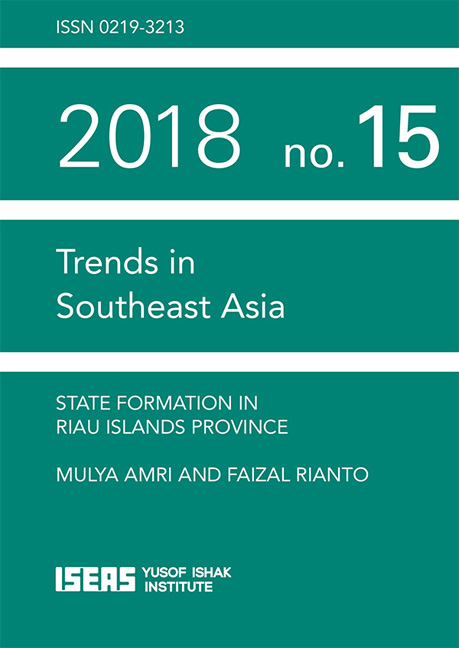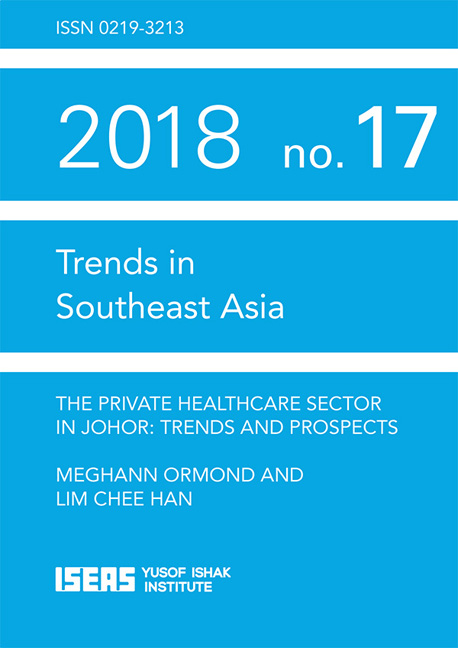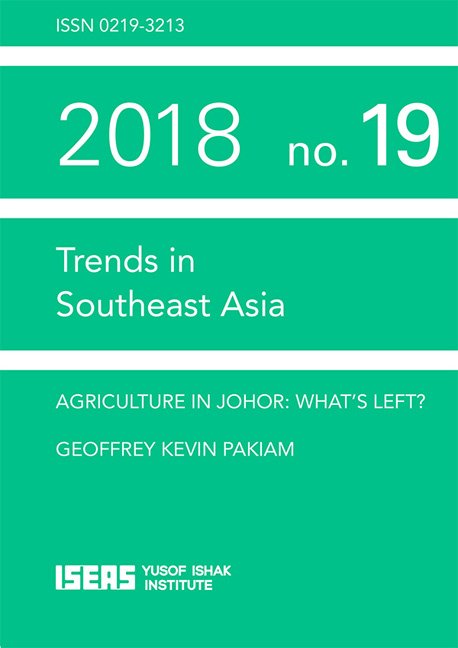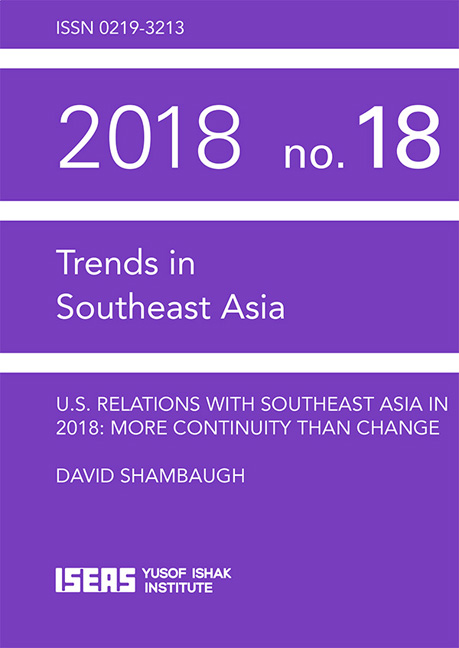Refine search
Actions for selected content:
146 results in Trends in Southeast Asia

Chinese Capitalism and Economic Integration in Southeast Asia
-
- Published by:
- ISEAS–Yusof Ishak Institute
- Published online:
- 12 February 2019
- Print publication:
- 12 April 2018

State Formation in Riau Islands Province
-
- Published by:
- ISEAS–Yusof Ishak Institute
- Published online:
- 25 August 2018
- Print publication:
- 10 July 2018

The Private Healthcare Sector in Johor
- Trends and Prospects
-
- Published by:
- ISEAS–Yusof Ishak Institute
- Published online:
- 25 August 2018
- Print publication:
- 23 July 2018

Developing Eastern Johor
- The Pengerang Integrated Petroleum Complex
-
- Published by:
- ISEAS–Yusof Ishak Institute
- Published online:
- 25 August 2018
- Print publication:
- 10 July 2018

Agriculture in Johor
- What's Left?
-
- Published by:
- ISEAS–Yusof Ishak Institute
- Published online:
- 25 August 2018
- Print publication:
- 27 July 2018

U.S. Relations with Southeast Asia in 2018
- More Continuity Than Change
-
- Published by:
- ISEAS–Yusof Ishak Institute
- Published online:
- 25 August 2018
- Print publication:
- 18 July 2018
